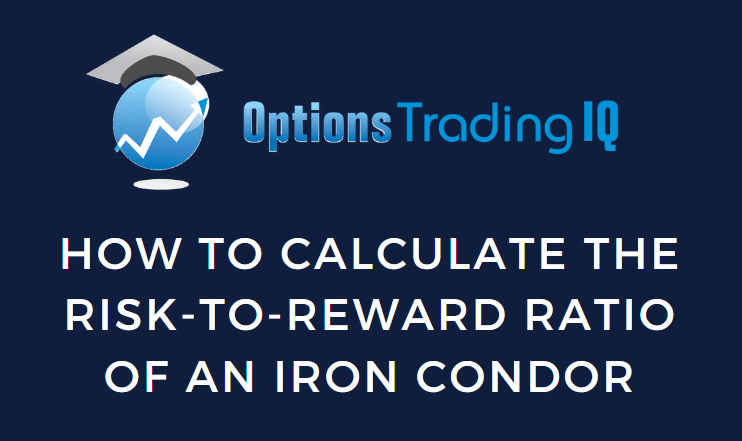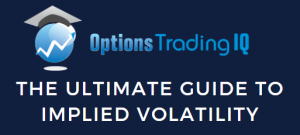

By the end of this article, you will know how to calculate the risk-to-reward ratio of an iron condor and how to control this ratio.
Let’s look at an example.
Contents
Example In SPY
SPY is the S&P 500 ETF, which many would agree is the most liquid underlying in the equities world.
Let’s look at the SPY iron condor comprising a call and put credit spread.
Date: September 6, 2024
Price: SPY @ $540
Buy one October 31 SPY $590 call @ $0.45
Sell one October 31 SPY $580 call @ $1.10
Sell one October 31 SPY $500 put @ $4.67
Buy one October 31 SPY $490 put @ $3.65
If an investor initiated the iron condor at those prices, he would receive a $1.67 credit per share.
Because:
$1.10 + $4.67 – $0.45 – $4.90 = $1.67
This iron condor has wide wings.
The put credit spread has a width of 10 points (500 – 490).
The call credit spread also has a width of 10 points (590 – 580).
The expiration graph of this iron condor modeled in OptionStrat would look like this:
If the price falls inside the iron condor at expiration, the investor keeps the credit, and both the put spread and the call spread expire worthless out-of-the-money.
Hence, the maximum profit is $1.67 per share.
This is a single-contract iron condor.
Since one contract represents 100 shares, the maximum dollar profit from this trade would be $167.
In the extreme case where the price moves completely out of the iron condor on the downside, the call spread will expire out-of-the-money worthless, and the put spread will be at a complete loss.
Because the difference between the short and long strikes is $10, the spread will be at a $10 loss per share.
Since $1.67 was collected as a credit initially.
The actual max loss is $10 – $1.67, or $8.33.
Following the same line of thought, the maximum loss is also $8.33. on the upside, if the price pierces the call spread.
The risk-to-reward ratio of an iron condor is the maximum risk divided by the maximum reward.
In our example, this is calculated by taking the risk of $8.33 per share and divided by the max reward of $1.67.
Risk-to-reward ratio = $8.33 / $1.67 = 5
If you prefer to calculate it using the total dollar risk of the trade ($833) and the total dollar reward on a contract basis ($167), you get the same answer:
$833 / $167 = 5
If you look back at the OptionStrat screenshot, these are the numbers that the modeling software provides:
Max loss: $832.50
Net credit: $167.50
They match what we had calculated.
Frequently Asked Questions
How Does The Risk-To-Reward Change If We Narrow The Width Of The Spreads In The Iron Condor?
In general, you are decreasing the risk by narrowing the width of the spreads.
Therefore, it would decrease the risk-to-reward ratio.
The benefit of using modeling software is that we can simply change the strikes of the iron condor to be 5 points wide instead of 10:
Here, it says that the max loss is $404 while the max reward is $96.
Therefore, this iron condor with narrow wings has a risk-to-reward ratio of 4.2.
Calculated by 404 / 96 = 4.2
How Does The Risk-To-Reward Change If We Move The Spreads Closer To The Money?
Here, we kept the width of the spreads at 5 points but moved them closer together with the short strikes at $515 and $565:
We see that now the risk-to-reward is:
$285 / $215 = 1.3
Moving the spreads closer, we collect larger credit, resulting in a larger potential reward. Therefore, it decreases the risk-to-reward ratio.
What Is The Difference Between Risk-To-Reward Ratio And Reward-To-Risk Ratio?
The risk-to-reward ratio is the risk divided by reward – as we have been doing in our examples.
Risk-to-reward ratio = $833 / $167 = 5
Sometimes, people will mention the reward-to-risk ratio, which is the reward divided by the risk. In our example, it would be:
reward-to-risk ratio = $167 / $833 = 0.2
One is the inverse of the other.
For example:
1 / 5 = 0.2
And,
1 / 0.2 = 5
Sometimes, people will use the two terms loosely instead of its strict definition.
So, it is important to know which number they are talking about.
What Is The Risk-To-Reward If We Collect One-Third Of The Width Of The Spread?
The person who asks this question must be watching Tastylive, as they always mention that they like to collect one-third the width of the spread in an iron condor.
Here is an example where we collect $1.67 per share, and the width of the spreads is 5 points:
Because:
1.67 / 5 = 0.33
We have collected one-third of the width of the spread.
Reading the numbers from OptionStrat, the risk-to-reward is:
$333 / $167 = 2
A risk-to-reward of 2 means that the max loss is twice the size of the max potential profit.
Is The Risk-To-Reward Always Two If We Collect One-Third Of The Width Of The Spread?
Yes, it is.
Since:
reward = 1/3 * width
Then:
Risk / reward = (width – reward) / reward = (width – 1/3 * width) / (1/3 * width) = (2 / 3 * width) / (1 / 3 * width) = 2
Final Thoughts
So now we know that Tastylive likes to have a risk-to-reward ratio of 2 to 1 for iron condors.
But you can adjust the risk-to-reward to your liking.
Your reward is based on the credit collected.
Your risk is based on the width of the spread.
You can narrow the spreads to decrease risk by decreasing the risk-to-reward ratio.
Or you can move the spread closer to the money to collect more credit.
We hope you enjoyed this article on how to calculate the risk-to-reward ratio of an iron condor.
If you have any questions, please send an email or leave a comment below.
Trade safe!
Disclaimer: The information above is for educational purposes only and should not be treated as investment advice. The strategy presented would not be suitable for investors who are not familiar with exchange traded options. Any readers interested in this strategy should do their own research and seek advice from a licensed financial adviser.










